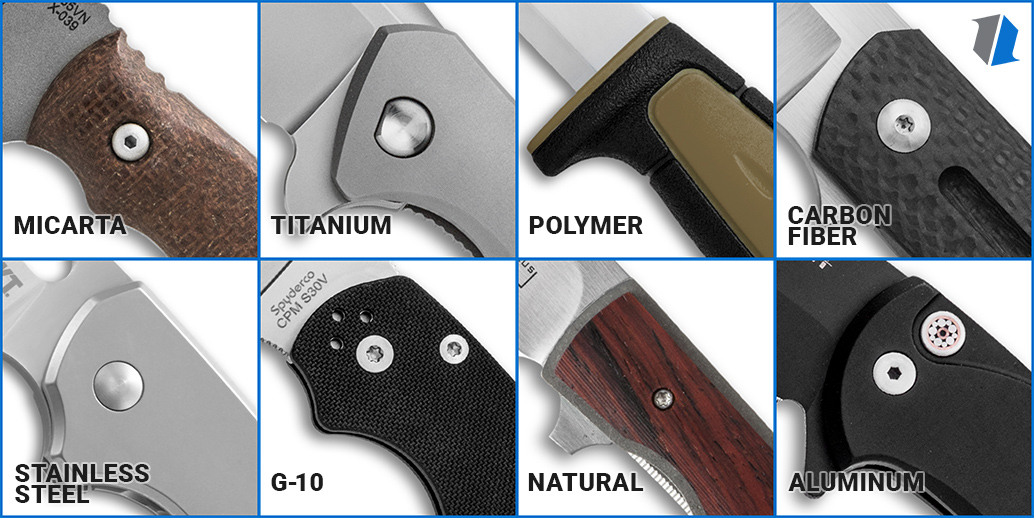The Complete Guide To Knife Handle Materials
Table Of Content

Crafting the perfect handle is achievable with a few simple supplies and the right guidance. Whether you are looking to upgrade an existing handle or make a completely new knife, it is important to choose the right materials and the design that best suits your needs. Wood is one of the earliest handle materials used on knives, and it’s still very popular today with both custom makers and production knife companies. Often a Japanese style ‘wa’ knife handle will have a collar made of a very strong material that helps to protect the softer handle wood and make it more durable. Common natural materials used for knife handles include bone; wood; or the shell, teeth or tusks of some animals.
Exploring Synthetic Materials for Knife Handles
The factors below all play an important part in developing a handle that lets you use the knife as intended. Start by using coarse-grit sandpaper to remove any remaining rough areas or tool marks on the handle. Apply even pressure and sand in the direction of the grain, especially if you are working with a wooden handle. Gradually work your way up to finer grits of sandpaper, ensuring that each successive grit removes the scratches left by the previous grit.
Step 3: Marking the Measurements

All in all, GRN is an excellent handle material across the board but it, like G10, does not pack the same allure due to its resemblance in both appearance and feel to plastic. Having said that, unless you are overly concerned with the look of your knife, this is an all-around superb handle material which requires essentially no maintenance whatsoever. While not as light as aluminum, stainless steel offers a much greater resistance to dents and scratching. It’s also quite resistant to corrosion, although not completely impervious to it – so you need to maintain a measure of care to keep it rust and spot free. As far as metal handles are concerned, stainless steel is certainly the most commonly available and the least expensive, but it is probably one of the heaviest.
Veark's CK01 knife is forged from a single piece of steel - Dezeen
Veark's CK01 knife is forged from a single piece of steel.
Posted: Tue, 10 Sep 2019 07:00:00 GMT [source]
Knife tang types and how this impacts the knife handle
A knife handles texturing should be skillful and smooth enough to make handle better for using. If the handle is designed adequately, you won’t lose grip on the knife, even if the sides are polished smooth. Once the handle is securely attached, assess the overall comfort and aesthetics. Consider applying a protective finish or treatment to enhance the durability and appearance of the handle. Apply a protective finish, such as boiled linseed oil, tung oil, or polyurethane, to the handle material.
Stainless Steel
Take your time during this step and double-check your measurements to ensure accuracy. It’s always better to be precise from the beginning to avoid any issues later on. Knifemaking is a fun and rewarding hobby, allowing you to craft functional yet attractive tools by your own hand – and one important aspect of that is the handle. Then be sure to check out our compete guide to knife locking systems for a deep dive into both common and proprietary locks and mechanisms. It’s essential to remember that Micarta is a strong material and might be more difficult to form than wood. This Deer & Deer Hunting Drop Point Knife is a great example of a knife that gets its handle right.

Some cord wraps will use an epoxy coating to bond them to the handles, making a more durable and often more comfortable grip. They can be anything from old fashion Jute twine to modern paracord or something in between. They typically offer a good grip if wrapped correctly, even when wet, although they aren’t generally as comfortable as solid grip or wood, Micarta, or other material. In addition to a one-piece knife, you also will sometimes see metal scales used, often aluminum or titanium. While scales like this still can suffer from being uncomfortable in extreme heat or cold, they often have a checkering or texture added that improves the grip.
Tim Setzer’s Ultimate Guide to Knife Handles
Maserin Reactor, a “Spetsnaz” folding knife all4shooters - all4shooters.com
Maserin Reactor, a “Spetsnaz” folding knife all4shooters.
Posted: Sun, 28 Jun 2020 07:00:00 GMT [source]
Such a misalignment of the knife handle design and the purpose of the knife would make the knife unusable and thus a failure as a product. Knife handles can have different tactile surfaces – smooth, rough, finely ribbed, depending on the material used in their production. However, the most crucial requirement for choosing a knife handle remains its comfortable fit in the hand for easy, precise tasks. Like aluminum, titanium is lightweight and creates a comfortable, attractive knife handle. It also resists rust more effectively than other materials and doesn’t become too chilly to handle during winter.
Step 4: Rough Shaping the Handle
Whether using pins, rivets, or epoxy adhesive, ensure a secure and proper attachment that aligns the handle with the blade. Sanding the handle is essential for achieving a smooth surface, and applying a finish protects the handle and enhances its appearance. Choose the appropriate finish for your handle material and apply it carefully, following the manufacturer’s instructions.
Custom Craftsman Door Handle: Genuine Blacksmith Hand Forged Iron – HH2572
Use sandpaper or files to smooth any visible epoxy residue and blend the handle seamlessly with the tang. Pay attention to the transition area between the handle and blade, ensuring a comfortable grip. This step removes any tool marks, sharp edges, or imperfections. As you progress, switch to finer-grit sandpaper until the handle feels smooth and comfortable in your hand. They all have very good electrical insulating properties, are durable and weather resistant. All in all, they’re excellent handle materials with few drawbacks.
Characteristic dimensions of handles include a height that is ¾ to 1 inch at the shortest point and 1 ¼ to 1 ½ inch at the tallest point. Original designs will vary, and measurements on a knife may be outside those dimensions. But folks seem to forget that there’s a whole another side to every knife and it can be more significant than the blade end.
I've watched this thread since the first of the month, and thought about what I could add, that hasn't already been said. The thing that I think isn't as common as it should be, is shaping a knife handle specifically to fit a human hand. One thing, have a good idea of what type of handle you are going to put on a knife before you start assembling the knife. It is a lot easier to draw things out and have a good idea where you are going than to just attach a block of wood or other handle material and hope that it turns out good. Taking a $300.00 ivory handle apart because something is not right is not good for your stress level. I do tend to like more sculpted handles with palm swells and more rounded butts.
An inadequate knife handle isn't only uncomfortable, since working with poorly designed knife tenses and tires the hand, which augments the risk for accidents. Skip knives with slab-side handles, because their square sharp angled grips don’t match with the naturally curved contours of the palm. A hilt that doesn’t fit the hand leads quickly to tiredness and hand injury risks.
For starters, it can be anodized into just about any color you can imagine, which makes for a great style addition to any knife, and also adds some extra hardness. Aluminum is also a very low-density metal, so in conjunction with being pretty tough, it’s also very lightweight. The most commonly used variety of aluminum is 6061 and its variations therein. The bone that used for knife handles is obtained from naturally deceased animals, including giraffes and elephants. Still, the most common and cost-effective bone used nowadays is the cow bone.
We even have a range of powder metals for making canister Damascus or Mokume. Find brass, nickel silver, stainless and other materials in bar stock and round stock for guards, spacers, pommels, and every other part of your knife. If your blade has a partial tang or a hidden tang, which means the metal does not extend throughout the length of the handle, you can use epoxy adhesive to bond the handle to the tang. Apply the epoxy to the tang and inside the handle material, ensuring full coverage. Insert the tang into the handle and hold it firmly in place until the epoxy cures.
Be mindful of any drying times and make sure to apply multiple coats for a durable and shiny finish. Using a combination of rasps, files, and sandpaper, carefully work on shaping the handle. Focus on smoothing out any rough edges and contours, as well as creating a seamless transition between different sections of the handle. Now that you have the rough shape of the handle, it’s time to refine and fine-tune the shape to achieve the desired design and ergonomics. As you shape the handle, periodically check how it feels in your hand. This will help you identify any areas that need further adjustment.
Comments
Post a Comment